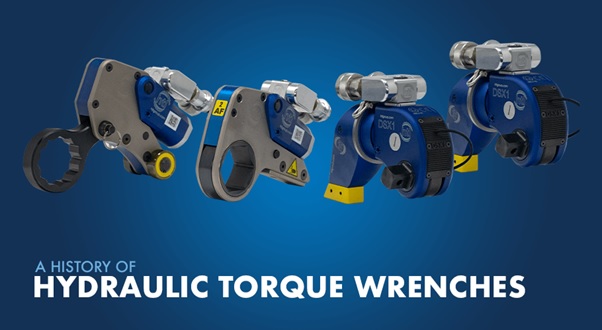
The early 1960s saw the Hydraulic Torque Wrench being conceptualised and later being invented in 1968 by George Sturdevant. Ever since then, tool manufacturers have provided advancements in the technology and usability of them. Engineers have carefully studied the physics explaining bolted fastening devices, resulting in improvements in measuring and applying force consistently and correctly.
What did we use before Hydraulic Torque Wrench?
Going far back to 1918, an employee of the New York City Water Department became frustrated with leaks caused by inconsistently tightened flange bolts. He set to work designing a solution, and as a result, he invented the first torque limiting tool to alleviate these bolting problems.
The early design of the Hydraulic Torque Wrench
About 13 years after torque limiting tool, John H. Sharp documented the first patent for the forerunners of the Hydraulic Torque Wrench we know today. Referred to as the ‘Torque Measuring Wrench’, this ratcheting tool featured feedback for when the operator achieved the desired torque.
The original hydraulic torque wrenches were nothing like what they are today, they were often cumbersome, with their moving parts and gears exposed. In today’s world, this would undoubtedly result in health and safety violations. The first low clearance tools, for instance, were designed with two anchors pinned either side of the wrench. They were heavy and slow, needing adjustments after each application, making them time-consuming work.
Labour Intensive
In the past, hydraulic torque wrenches functioned when the operator ‘pushed’ the button on the pump, which extended the piston and turned the nut 30 degrees. The operator would then press the ‘pull’ on the pump control, retracting the piston back. This process would be then until the flange connection was complete.
The same applies to Square Drives torque wrenches. Operators had been mindful not to get their body parts caught in-between the reaction area and the opening gear.
Today’s hydraulic torque wrenches
Throughout time hydraulic torque wrenches have evolved and are used by technicians today. Industrial bolting has become smarter and more intuitive than ever before. Benefits such as lighter weights, smaller tool dimensions and the ability to run multiple tools from a single pump have all advanced the technology. Progressive safety features now aim to eliminate bolting related injuries, increasing safety for the workforce and improved productivity for the employer.
In today’s world, with stringent processes and standards that need following, the design of a hydraulic torque wrench is to handle the toughest bolting jobs accurately and quickly. Automated actuation triggers on the tool and single activation buttons to operate a tool via the pump have replaced the manual controls of the past. As such, the process to tighten bolts has improved significantly.
Standard Safety
Manufacturers of hydraulic torque wrenches, such as HTL Group, now design their tools using high strength, lightweight materials with in-built safety features. Specifically designed to improve handling capabilities and operator safety while speeding up the bolt tightening or loosening process.
Image – https://www.linkedin.com/pulse/hydraulic-torque-tools-now-dave-oake/.



















